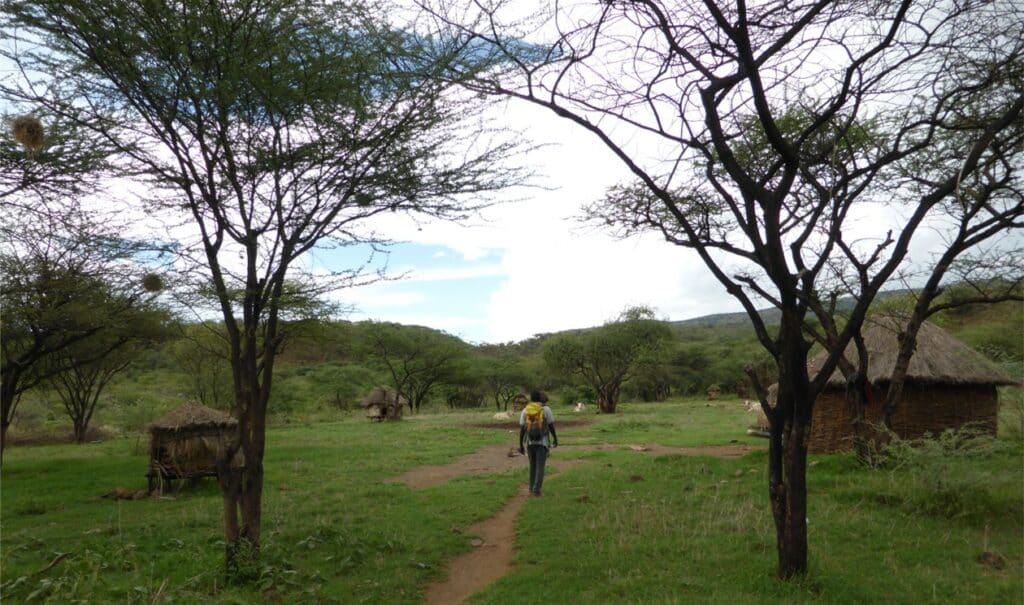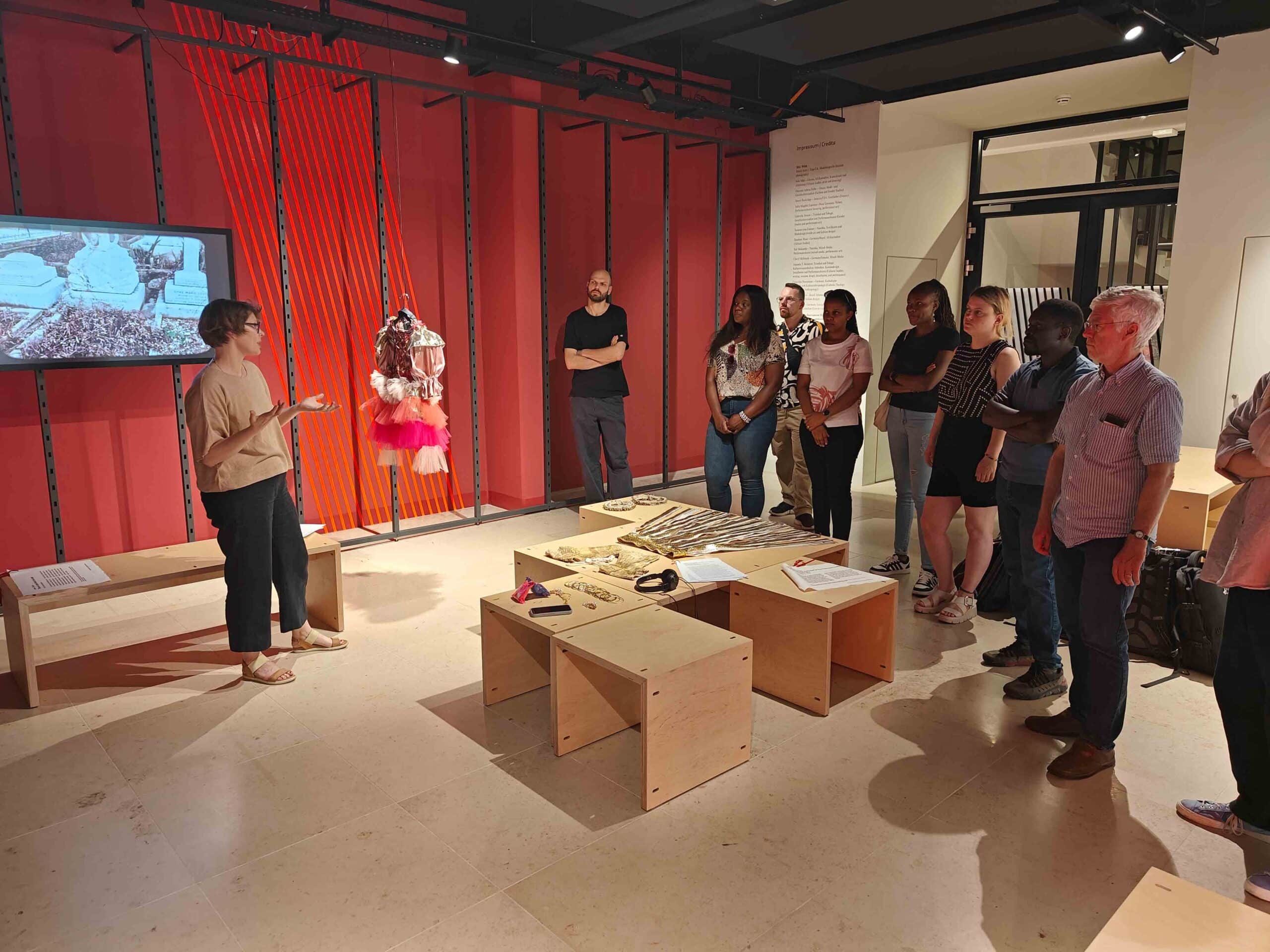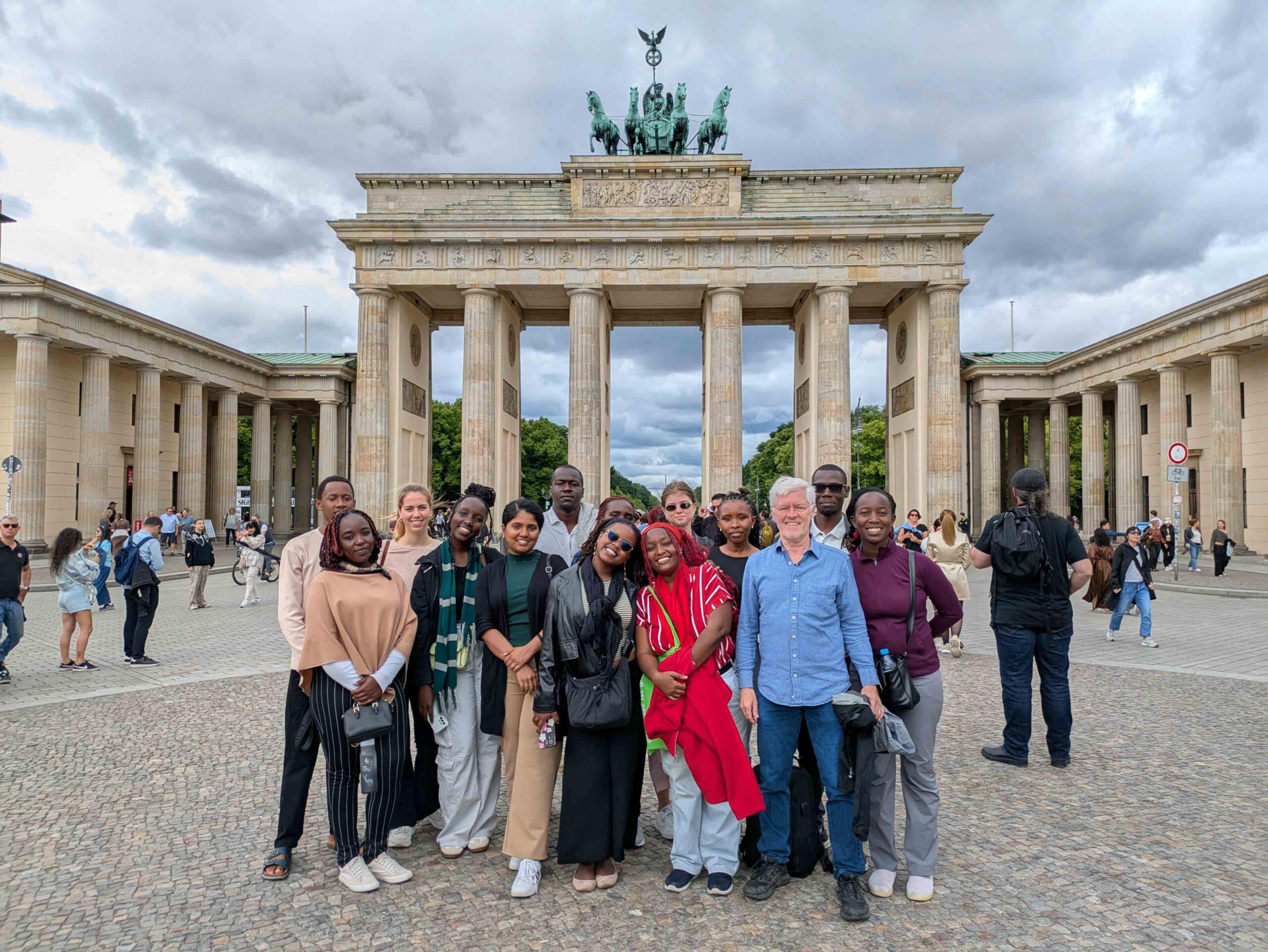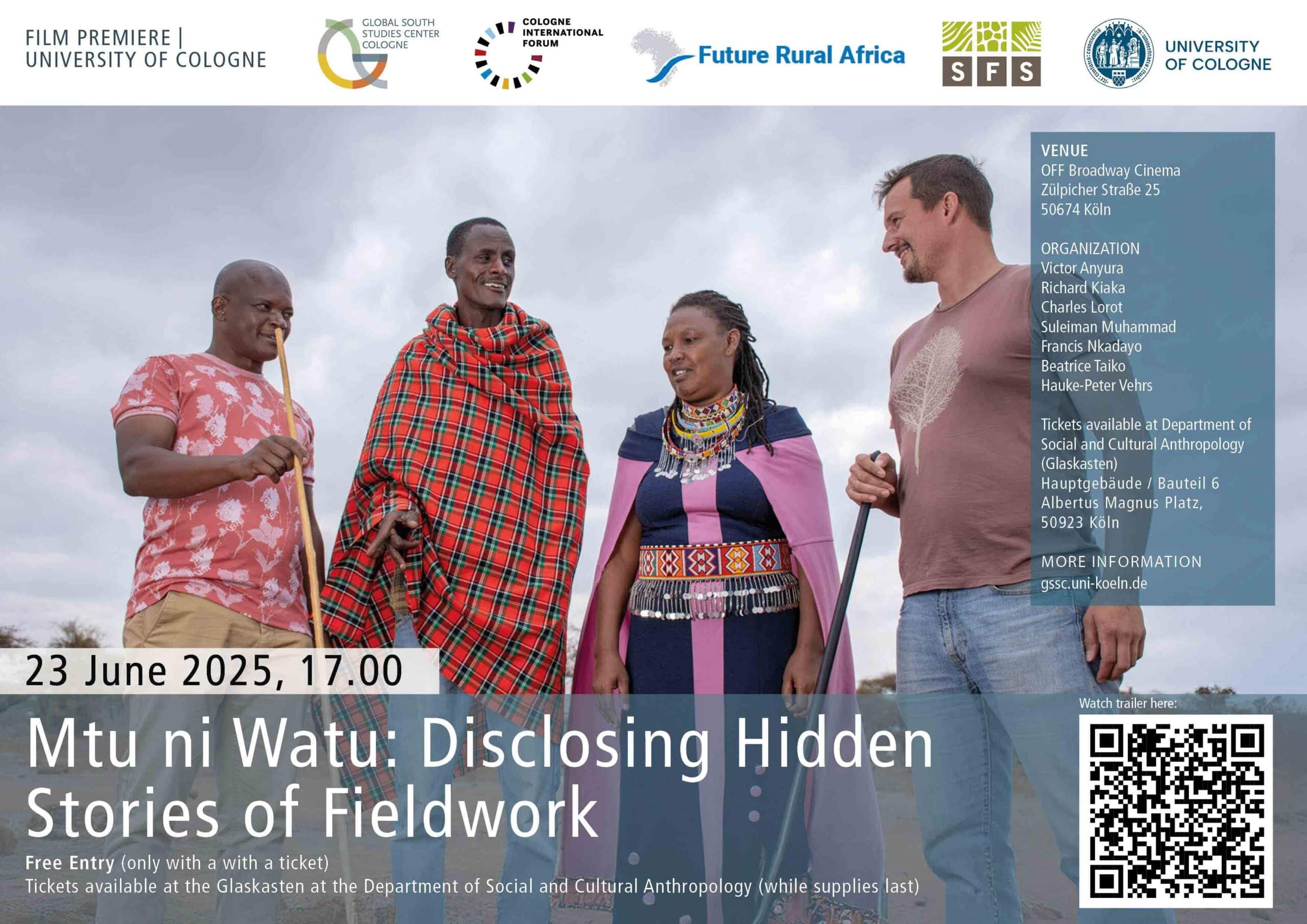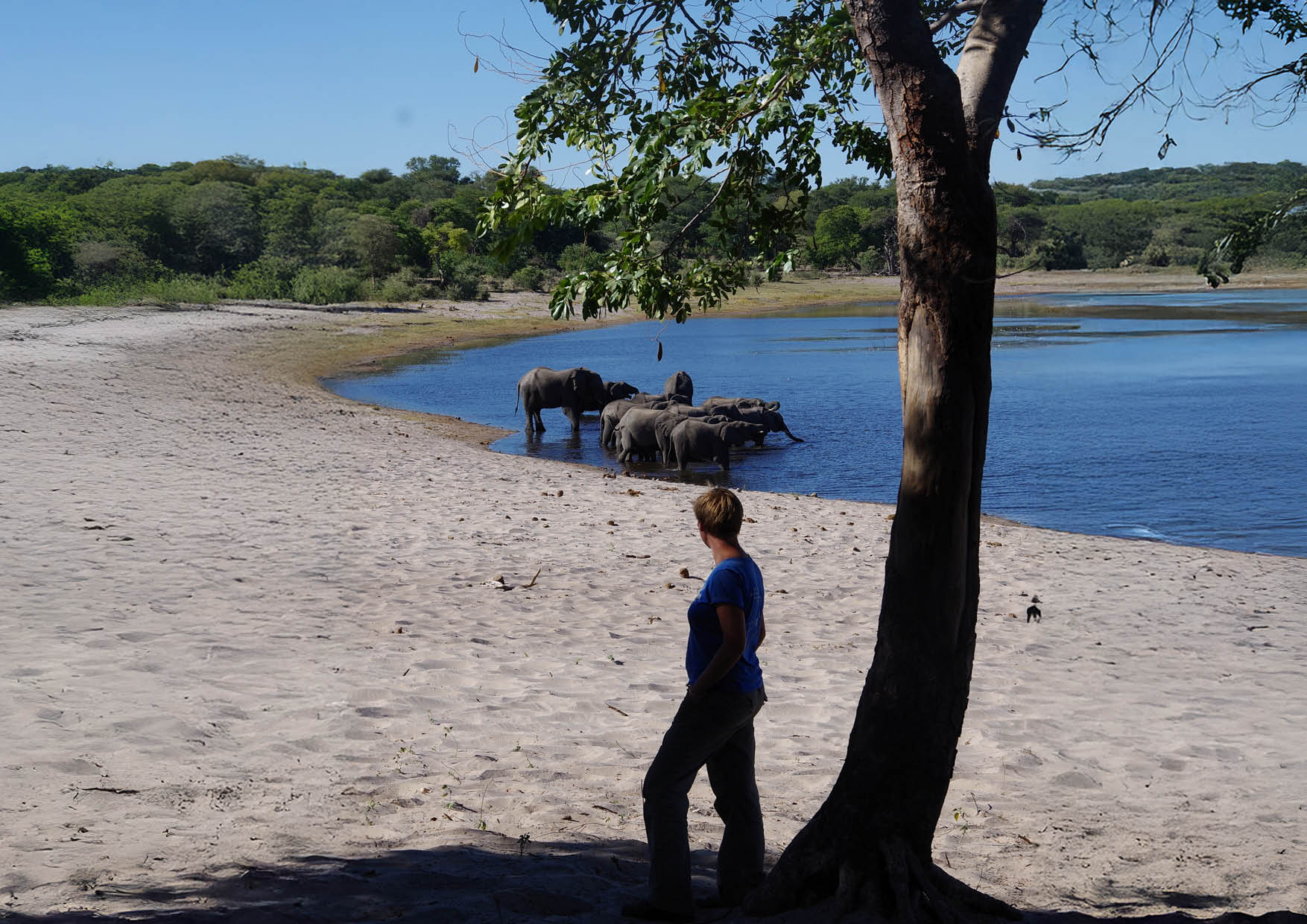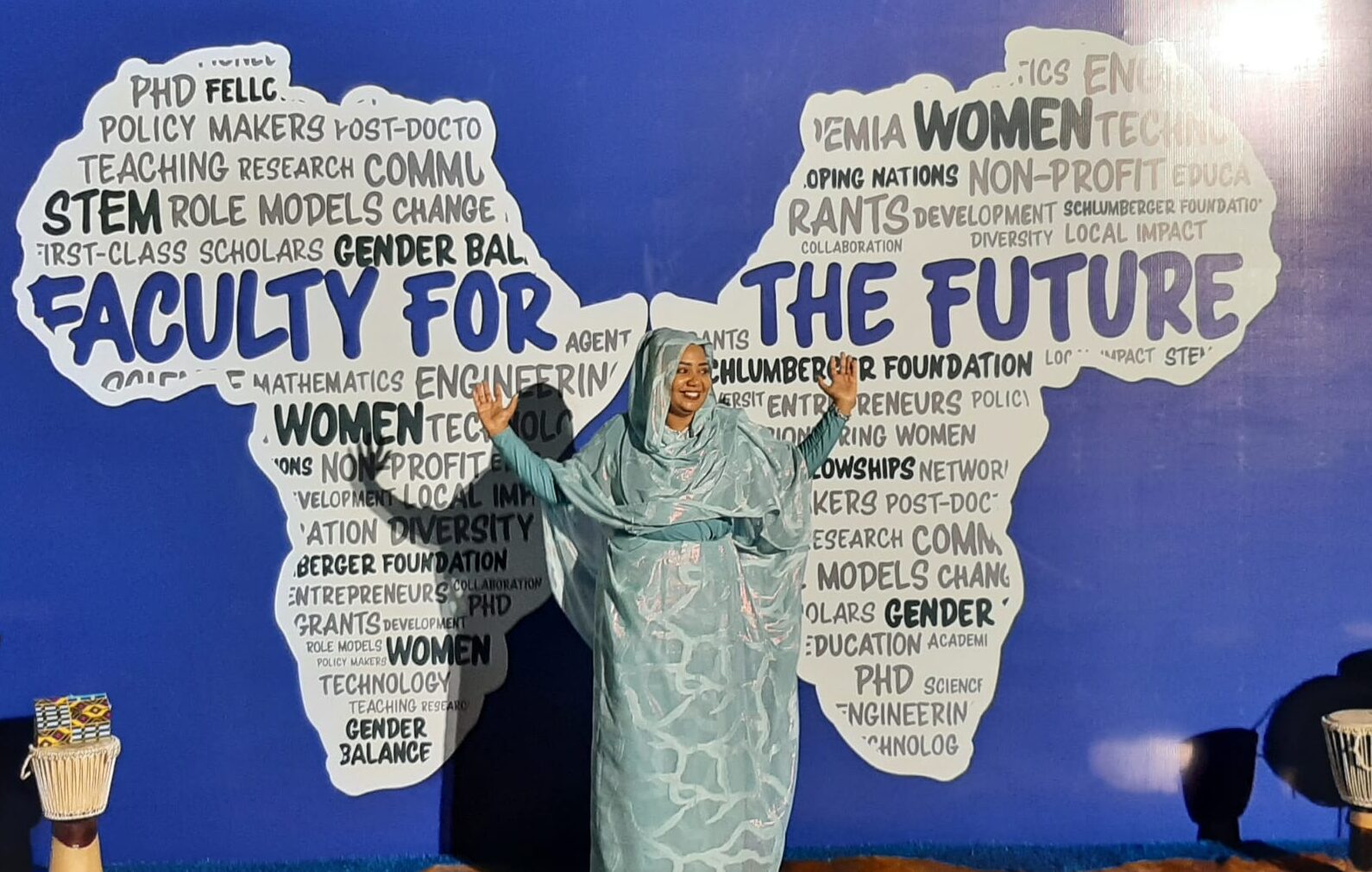When does research actually start? As a doctoral candidate, you don’t just hop on a plane, arrive in Kenya, travel to the research region, and get started. Usually, the Ph.D. begins with thorough preparations at the university, the application for the required documents in the field, possibly a shorter exploration trip to the region (hopefully together with some colleagues), discussing the topic, and thinking about the actual location of your fieldwork. Before Peter knew that he would conduct research at Mt. Paka, more than six months of preparation had already passed, and six more would pass before Kudee and Peter moved into their hut in Paka. But how, actually, did the two meet for the first time?
The initial meeting between Kudee and Peter was a rather short one and happened when Peter was looking for someone to accompany him on an exploratory trip for a couple of days. At that time, Peter was visiting East Pokot with his Ph.D. supervisor Michael Bollig, who had already carried out research there in the late 1980s. The two of them made a visit to a good friend and Michael’s former assistant, Yusuf, who then established contact with Kudee. Since Kudee had previously worked with two other anthropologists, it seemed an obvious choice to ask him if he would like to accompany Michael and Peter. But before they went to Mt. Paka, they first visited another place that was even further off the beaten tracks. Far to the north of East Pokot stayed a friend of Michael, Father Sean. Kudee accompanied Michael and Peter on this journey which took them via Kapedo to a place north of Mt. Tiaty:
I was a little puzzled when we drove to Rotu because I did not know what would happen to us. Driving through Kapedo I felt very insecure, being a Pokot in the border zone. What I knew, nothing would happen to the two [Michael and Peter], in case Turkana warriors stopped the vehicle and asked who I was. But after we passed Kapedo and reached that place where the army drilled for water, I felt relieved when I just saw Pokot herders watering their cattle. The rest of the trip was simply nice, but also really long. It was the first time for me to travel this far north and I enjoyed seeing the landscape. The welcoming at the missionary station by Father Sean and Sister Rebecca was really warm. I never expected to see such nice rooms in the middle of such a hostile environment where raids between Pokot and Turkana frequently happen. It was a bit like a hotel in Nairobi. The biggest challenge, however, was the access to the mobile network in this remote area and we always had to go to the small, sharp-pointed hillside of Mukogho (KiPokot: calabash) to send a message home.
Kudee, 5 March 2024
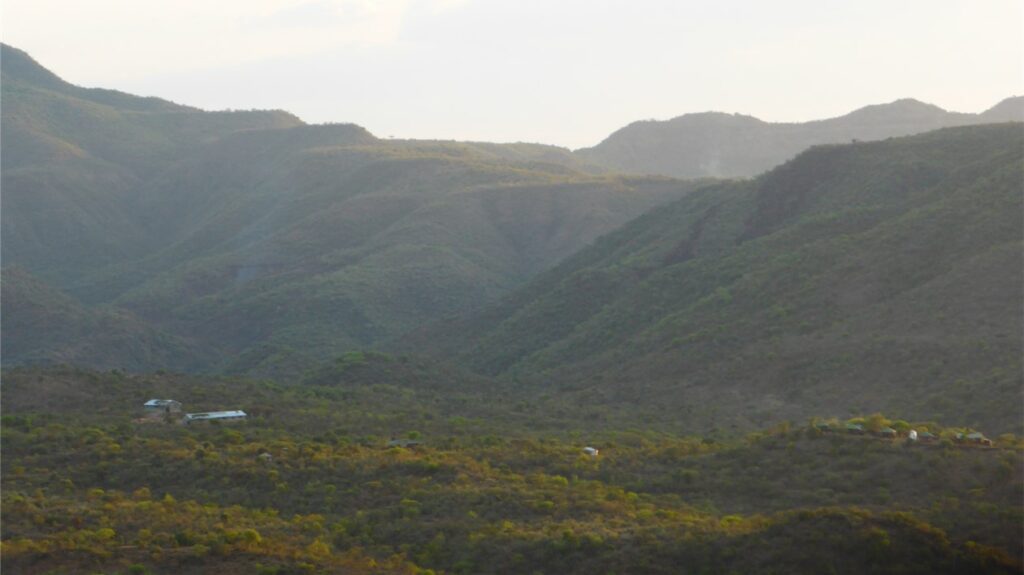
Once the group had returned, Michael left the group. For Kudee and Peter the next step was to discuss about potential research sites in the region, but it was not an easy task as many uncertainties had to be considered. Among the relevant criteria for a ‘good’ research site were the accessibility by car or motorcycle, the water supply, and security issues, as conflicts between young Pokot warriors and people from other ethnic groups (such as Samburu, Turkana, Tugen or IlChamus) or between Pokot and the state are of regular occurrence in the border zones. Thus, border regions dropped out and it quickly turned out that only a place that is located in the centre of East Pokot would make a good choice, and Mt. Paka moved up the list. There was an old sand road from colonial times that was still traversable and a new borehole was about to operate at the foot of Mt. Paka. Furthermore, Chepungus, a place on the southern slope of the mountain, lies more than 1,300 metres above sea level and Malaria is not prevalent there, as it is in the lowlands. Ultimately, there is also access to network reception in this place – even though quite limited. But the combination of all these factors convinced the two to give the research a try in Chepungus. Hence, in March 2024, Kudee, Peter, and the former Assistant Chief Wilfred visited Paka to see if the research could be carried out there. This was also the day that Kudee and Peter met Chesumkat’s family for the first time and the idea was born to build a hut in the homestead. After the plans were made, Kudee and Peter still did some little work in the plains around Paka (but not yet at Paka itself) before Peter returned to Germany for a couple of months, and the main 12-month research was due to start in August. However, at that time, the collaboration between the two was by no means as solid as it appears today. Every new collaboration is a difficult one, each time anew, as Kudee recalls:
Working as a research assistant comes with different experiences, which also depend a lot on the constellation between the assistant and the researcher. As an assistant, you are exposed to many expectations in the field, both from the researcher and the people you meet in the field. Even though it often goes well, you are sometimes exposed to the hostility of the interview partners and they can simply leave you in the middle of an interview or they don’t even show up at the time scheduled. Many people also ask me for support when I work with a white researcher and they don’t believe me when I tell them that I don’t have anything left. Then of course there’s the problem that the relationship with the researcher can be tense, for example, if they don’t yet know how to talk to people. When you meet people in East Pokot, you sit down together and exchange news (lokui). This could sometimes even take half an hour or longer, and some researchers might not have the patience. Moreover, if you as the assistant are late for an appointment, you can quickly end up in a conflict with your boss. Sometimes you find the courage to ask for an advance payment, but the researcher is hesitant or he makes offers that don’t materialize in the end. That’s difficult then.When I started assisting, I was a young chap from high school. The salary was not high, but the collaboration itself was quite interesting. Over time, I saw many places in East Pokot and got to know many different people, including some important ones such as members of parliament, chiefs, and administration officers. This made me more courageous and also improved my English. Nowadays, I have no problem speaking up in large meetings and expressing my concerns.
Kudee, 6 March 2024
Returning to the research of Kudee and Peter, in August 2014 their research finally kicked off and they returned to Paka, just to find a first surprise. The hut which they expected there had not yet been built. Part of the truth, probably, was the somewhat bizarre situation of a German researcher showing up on someone’s doorstep, saying that he and his assistant wished to live in the homestead, then disappearing again, only to show up a couple of months later. Even though Kudee was in constant contact with Chesumkat, it still seemed unthinkable that they would really return. Moreover, most of the resources for building the house were not (yet) available. For instance, the grass for the roof was only harvested in September and October (towards the end of the rainy season) and was not available earlier in the year. So instead of moving into a hut in August, the research began in a tent. This seemed to be quite a good alternative in the beginning. But one day a cow stepped into the tent and made a big hole in the tarpaulin. The perceived ‘safe space’ that protected them from whatever is crawling around in the night had started to crack. Even though they made a makeshift repair, it was not as good anymore. Imagine one of the roaming donkeys would do the same at night. What a horrible prospect. So, in the meantime, they moved into the aperit hut. The aperit normally is the central place in a homestead place where guests are received and in this homestead there was even an old hut used in the same way, for instance when guests wanted to spend the night in the homestead. It was the former hut of the host’s grandmother and the hut was normally used by the older children of the family and definitely had seen better days. Yet, as said, it was only a temporary arrangement.
When they finally moved into the new hut in early October, it was a big relief. The last remaining items to complete the furnishing by then were the cooking stones and the beds. Finding the three stones for the cooking area in the hut was an easy task on the slopes of an inactive volcano. However, building the beds was a more difficult one. Kudee and Peter got a few ideas from their host family about the building materials (they needed a sturdy bed frame and long, flexible branches to weave the beds) and so they cut the thick branches of talamogh (Senegalia mellifera) for the frame and the sticks of ptarin (Senegalia brevispicak) for the wooden slats. Once they collected the material for the first bed and brought it back to the homestead, they started to build the frame. When their host mother Cheptoyö came by, she wondered about the handiwork. With a big grin, she told them that she had never seen such an ugly bed before and would be happy to help them to build the second bed once they had collected the materials. And so the second bed turned out to be much neater than the first.
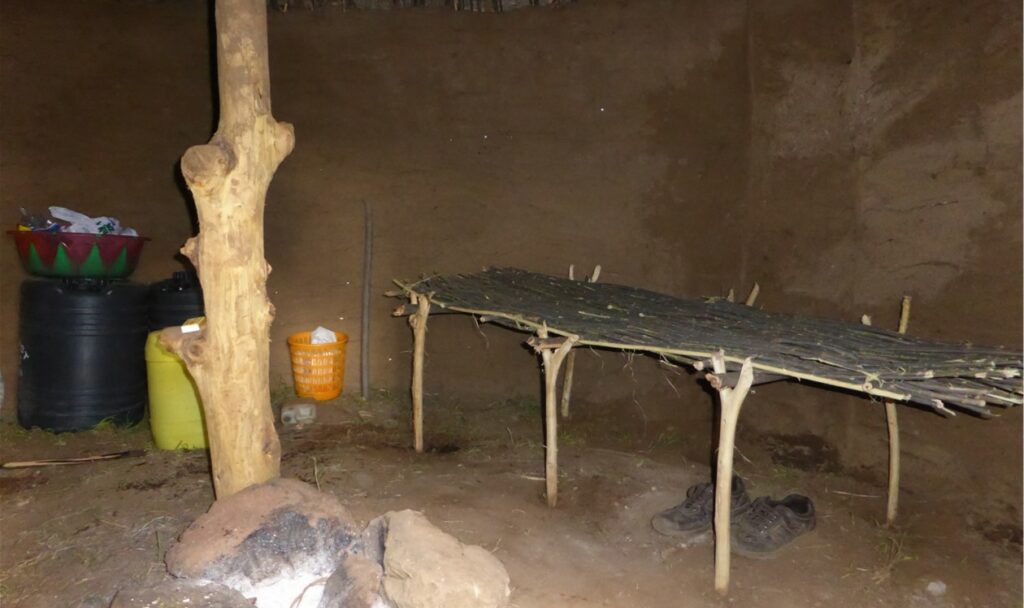
Another matter that needs to be addressed here is the nature of the relationships between assistants and researchers, initially based on an agreement of the employment, salary, and further work conditions. This is the technical side of it. But for the research in Paka, the conditions Kudee and Peter found were quite special and it was clear that they would spend more time together than just the working hours. Quite a difficult endeavour as the two recall:
I hope that we can both keep up the current enthusiasm for our research, and at the moment things are still going really well. I also told Kude that he should take some time off when he feels like it and I hope that the time he spends in Nginyang with his family and for his market job from Friday to Monday also make the whole research situation more comfortable for him.
Peter, 27 August 2014
At the beginning of my research assistance with Peter, I did not want to rely too much on the new job. You never know if everything works out and whether the research will go well. What convinced me was the time we spent in Paka together, the daily business of collecting firewood, fetching water, and so on, and the fact that the research offered regular time for me and my family. I was given a motorcycle that I could take home on the weekend and we also had some other projects together that were important to me, such as the construction of my house near Nginyang. That made us bond and showed me that it wasn’t just about research, but about living together. That’s why I gave up my job on the market at some point.
Kudee, 7 March 2024
As can be seen, it was not entirely clear whether it was possible or even desirable to accept the research conditions for Kudee from the beginning of fieldwork. As he had already made mixed experiences with research assistance in the past and was well aware of the volatile nature of research and the difficult aspects of these partnerships, he was not committed to choosing research as his primary occupation for the next year right away. At the beginning of the research, he kept his job as a tax revenue collector at the weekly market in Nginyang. At least until he was sure that he really wanted to commit himself to the research work with Peter, provided that the personal relationship between the two was suitable for such a collaboration.
In retrospect, I would say that Kudee tested me, not deliberately, but simply to protect himself. He already knew the conditions of research and that researchers are often not the most reliable partners and times of intense research are followed by idle periods with little or no work. Definitely, in such a situation you also run the risk of earning less money with less work and at the beginning of our partnership he did not know how I would handle such phases. So, I could not blame him for being sceptical about the promises of scientists. Fortunately for me, Kudee was quickly convinced that this research was worth it and that we could make a good team. I am still immensely grateful for that!
Peter, 4 March 2024
As they were ready for fieldwork now, Kudee and Peter faced a situation in which they not only conducted research together but would spend a year within a new community. They both had to familiarize themselves with this new place, settle in, get to know the people, and learn how to cope with everyday life alongside their work. This started with the domestic chores, cooking, cleaning, making a fire, collecting wood, fetching water, and living together in the smallest of spaces (the hut had no more than 10 m² and that already included the beds and the fireplace). However, the immersion into research and community life is another story that comes soon.
